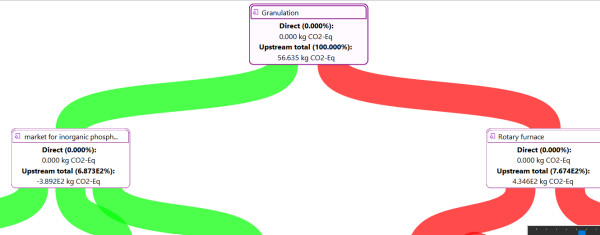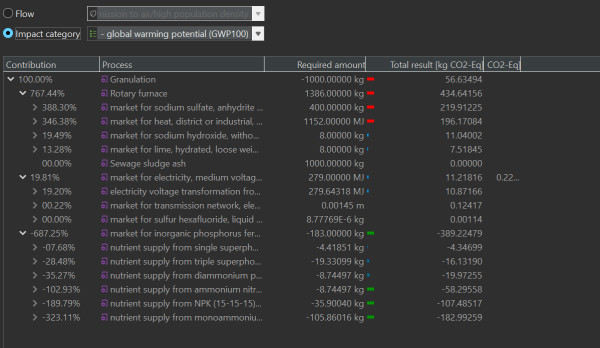Hello,
I am checking the results of the impact categories calculation (used eager/all option, IPCC 2021 method). When I compare the values of the contribution tree with those of the sankey diagram, I notice they are not the same. In the sankey diagram the values have a different order of magnitude than those in the contribution tree (for the same impact category, GWP100). Additionally, due to this inconsistency, the values in the sankey diagrams don't add up, as shown in the attached picture:

I am wondering if this is an error of the software or if I am doing something wrong that I can fix. Thank you for your help.
This is the contribution tree for the same impact category